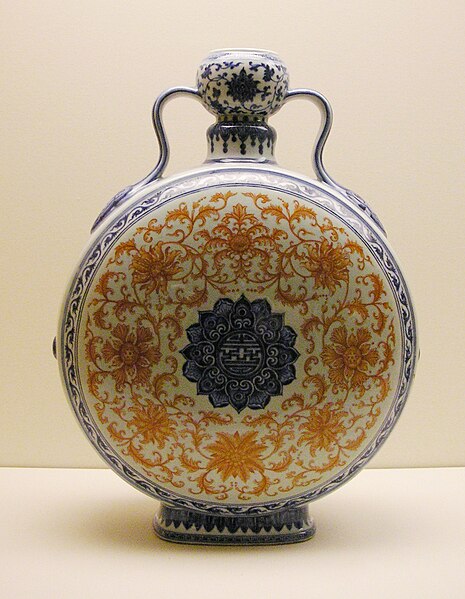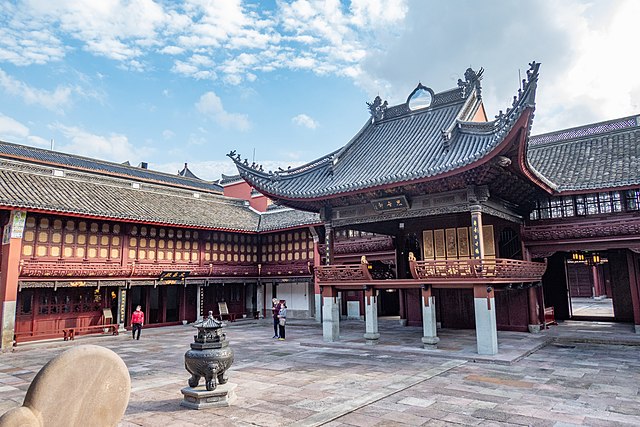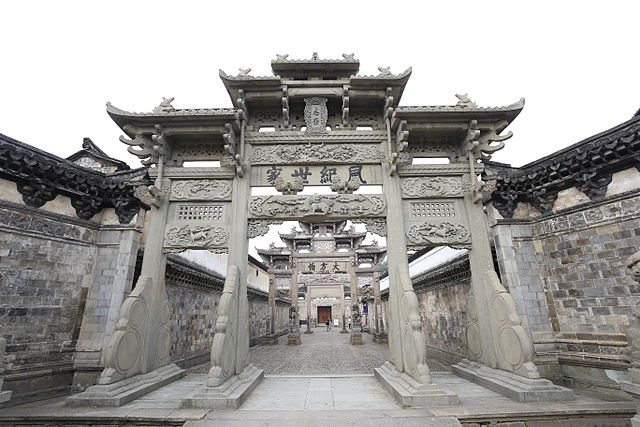Chinese culture is one of the world's oldest cultures, originating thousands of years ago. The culture prevails across a large geographical region in East Asia with Sinosphere in whole and is extremely diverse, with customs and traditions varying greatly between counties, provinces, cities, towns. The terms 'China' and the geographical landmass of 'China' have shifted across the centuries, before the name 'China' became commonplace in modernity.
Porcelain is so often associated with China that it is often referred to as "china" in everyday English usage.
Chinese shrine in Ningbo city
Residence of the Lu Family in Dongyang, built in the Ming period.
Fenghuang County, an ancient town that harbors many architectural remains of Ming and Qing styles.
The Sinosphere, also known as the Chinese cultural sphere, East Asian cultural sphere, or the Sinic world, encompasses multiple countries in East Asia and Southeast Asia that historically were heavily influenced by Chinese culture, norms and traditions. According to academic consensus, the Sinosphere comprises Greater China, Japan, Korea, and Vietnam. Other definitions may include the regions of modern-day Mongolia and Singapore, largely due to limited historical Chinese influences or increasing modern-day Chinese diaspora. The Sinosphere is not to be confused with Sinophone, which indicates countries where a Chinese-speaking population is dominant.
East Asian Dragons are legendary creatures in East Asian mythology and culture.
Great Wave off Kanagawa, one of the most famous Japanese woodblock prints.
Mahayana Buddhism, a religion particular to the Sinic world.
Confucianism plays a crucial part in East Asian culture.








